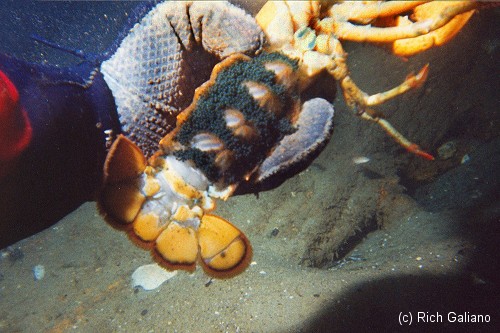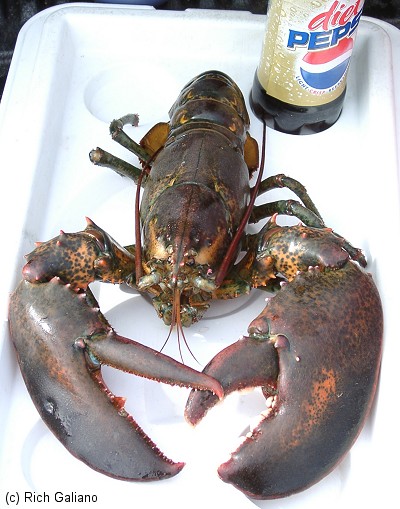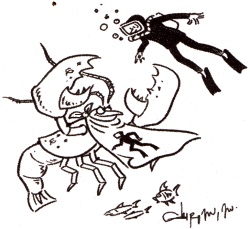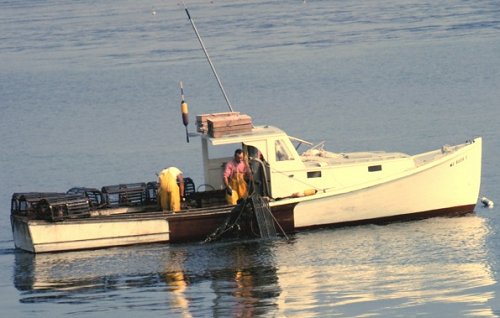American Lobster (1/6)

Homarus americanus
Size: to 36" and 45 lbs. (record)
Habitat: subtidal to the edge of the continental shelf, in any sheltered spot
Notes:
Lobsters differ from shrimps in having three pairs of clawed legs, the first with very large claws. Southern "Spiny Lobsters" are only distantly related; freshwater crayfish are closer. Lobsters, or "Bugs", are mainly nocturnal, and feed primarily on living or freshly killed food rather than scavenging on carrion, as was once thought. Although they are predominantly solitary creatures, lobsters do have a sort of social life amongst themselves. Males are more aggressive than females and will form pecking orders among individuals in an area. Female lobsters apparently seek the protection of a male when molting, then mate afterward. Lobsters shed their shells once or twice a year, depending mainly on the temperature.
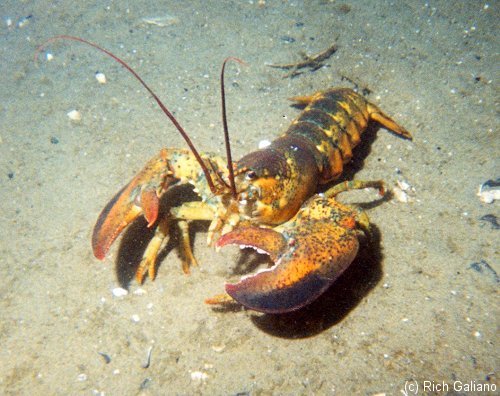

Inshore lobsters tend to stay in one place, seldom moving more than a mile or so, but deepwater lobsters farther out on the continental shelf follow a seasonal migratory pattern: shoreward in summer, returning to the shelf again in the autumn. The record travel so far is 225 miles covered by a lobster tagged off the continental shelf and recovered at Port Jefferson, Long Island, New York.
Female lobsters carry their eggs underneath their tails for much of the year. Animals like this are known as "in-berry", and must be released immediately. A one-pound lobster is estimated to be 5-7 years old. Most lobsters seem to be lefties - that is, the big crusher claw is on the left, and the smaller ripper claw is on the right. But just like people, this is not 100%, and occasionally you may run across a right-handed bug. The crusher claw is much stronger than the ripper.

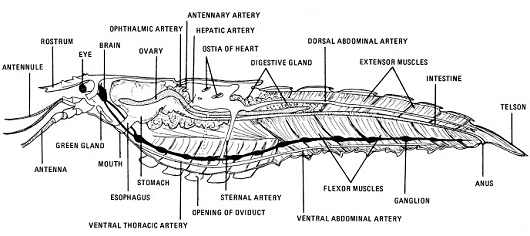

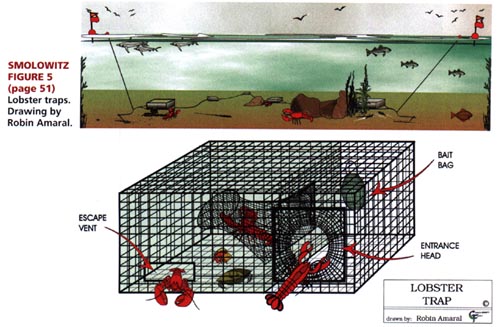

|
|
||||||||||||||||||||||||||||||||||||||||||||||||||||||||||||||||||||||||||||||||||||||||||||||||||||||||||||||||||||||||||||||||||||||||||||||||||||||||||||||||
Calculated weight estimates of male, female, and sex unknown lobsters ranging in carapace length from 3-3/8 to 5-1/2 inches, by one-sixteenth inch length increments. Estimated weights are based on length-weight formula conversion constants provided by NMFS, 1993.

